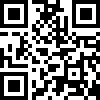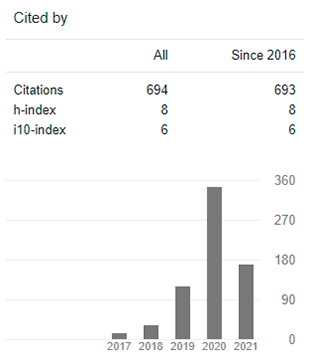Sound device to improve autonomy of visually impaired people in adapted soccer
Dispositivo sonoro para mejorar la autonomía de personas con discapacidad visual en fútbol adaptado
DOI:
https://doi.org/10.29394/Scientific.issn.2542-2987.2024.9.32.13.275-297Keywords:
autonomy, visual disability, audio device, adapted soccerAbstract
Adapted soccer for visually impaired people has experienced significant growth since the 1980s, both internationally and nationally. Due to the nature of this sport, players receive auditory assistance to orient themselves on the field of play. The aim of the study is to develop sound devices to assist visually impaired people in their soccer training. Players will have a button in their hand that, when pressed, will activate speakers located in the goal, emitting a sound so that the player can identify the location of the three posts. The type of research is applied, longitudinal-exploratory with a qualitative approach. The evaluation of the device was carried out in two stages: first, individual tests with a representative from each team (Club Vulcano and ANVIZSUC), and then a demonstration match between both teams. Six athletes participated in the post-match survey. The data were analyzed and the result obtained was that the assistance devices increase the autonomy of visually impaired people in the practice of adapted soccer.
Downloads
References
Anthierens, C., Groux, D., & Hugel, V. (2018a,b). Sensory navigation guide for visually impaired sea kayakers. Journal of Field Robotics, 35(5), 732-747, e-ISSN: 1556-4959. Retrieved from: https://doi.org/10.1002/rob.21775
Carretti, G., Mirandola, D., Sgambati, E., Manetti, M., & Marini, M. (2022). Survey on Psychological Well-Being and Quality of Life in Visually Impaired Individuals: Dancesport vs. Other Sound Input-Based Sports. International Journal of Environmental Research and Public Health, 19(8), 1-10, e-ISSN: 1660-4601. Retrieved from: https://doi.org/10.3390/ijerph19084438
Chen, C., & Lin, S. (2011). The impact of rope jumping exercise on physical fitness of visually impaired students. Research in Developmental Disabilities, 32(1), 25-29, e-ISSN: 0891-4222. Retrieved from: https://doi.org/10.1016/j.ridd.2010.08.010
Fernandes, H., Faria, J., Paredes, H., & Barroso, J. (2011). An integrated system for blind day-to-day life autonomy. In The proceedings of the 13th international ACM SIGACCESS conference on Computers and accessibility (ASSETS '11). (pp. 225-226). ISBN: 9781450309202. New York, NY, USA: Association for Computing Machinery.
Galindo-Rueda, F. & López-Bassols, V. (2022). Implementing the OECD Frascati Manual: Proposed reference items for business R&D surveys. OECD Science, Technology and Industry Working Papers, No. 2022/03. Paris, France: OECD Publishing.
García, E. (2020). Tecnología aplicada al deporte profesional en personas con discapacidad visual. Trabajo Fin de Máster. España: Universidad de Valladolid; Instituto Universitario de Oftalmobiología Aplicada (IOBA).
Gougoux, F., Zatorre, R., Lassonde, M., Voss, P., & Lepore, F. (2005). A functional neuroimaging study of sound localization: visual cortex activity predicts performance in early-blind individuals. PLoS Biology, 3(2), 0324-0333, e-ISSN: 1545-7885. Retrieved from: https://doi.org/10.1371/journal.pbio.0030027
Hussain, I., Chen, L., Mirza, H., Chen, G., & Hassan, S. (2015). Right mix of speech and non-speech: hybrid auditory feedback in mobility assistance of the visually impaired. Universal Access in the Information Society, 14, 527-536, e-ISSN: 1615-5297. Retrieved from: https://doi.org/10.1007/s10209-014-0350-7
IBSA (2022). Blind Football Laws 2022-2025: B1 Category. Paris, France: International Blind Sports Federation.
Ivascu, S., Moldoveanu, F., Moldoveanu, A., Morar, A., Tugulea, A., & Asavei, V. (2023). Flying a Quadcopter-An Audio Entertainment and Training Game for the Visually Impaired. Applied Sciences, 13(11), 1-21, e-ISSN: 2076-3417. Retrieved from: https://doi.org/10.3390/app13116769
Katz, B., Dramas, F., Parseihian, G., Gutierrez, O., Kammoun, S., Brilhault, A., ... & Jouffrais, C. (2012a,b). NAVIG: Guidance system for the visually impaired using virtual augmented reality. Technology and Disability, 24(2), 163-178, e-ISSN: 1878-643X. Retrieved from: https://doi.org/10.3233/TAD-2012-0344
Khan, S., Nazir, S., & Khan, H. (2021a,b). Analysis of navigation assistants for blind and visually impaired people: A systematic review. IEEE Access, 9, 26712-26734, e-ISSN: 2169-3536. Retrieved from: https://doi.org/10.1109/ACCESS.2021.3052415
Kumari, R., Lee, S., Shin, J., & Lee, S. (2023). Effect of Perceptual Training with Sound-Guided and Kinesthetic Feedback on Human 3D Sound Localization Capabilities. Sensors, 23(11), 1-15, e-ISSN: 1424-8220. Retrieved from: https://doi.org/10.3390/s23115023
Pieralisi, M., Di Mattia, V., Petrini, V., De Leo, A., Manfredi, G., Russo, P., ... & Cerri, G. (2017a,b,c). An electromagnetic sensor for the autonomous running of visually impaired and blind athletes (Part I: The fixed infrastructure). Sensors, 17(2), 1-10, e-ISSN: 1424-8220. Retrieved from: https://doi.org/10.3390/s17020364
Yandun, F., Auat, F., Lorca, D., Acevedo, O., & Auat, C. (2019a,b,c). Design and evaluation of sound-based electronic football soccer training system for visually impaired athletes. BioMedical Engineering OnLine, 18(76), 1-17, e-ISSN: 1475-925X. Retrieved from: https://doi.org/10.1186/s12938-019-0695-5
Published
How to Cite
Issue
Section
License
Copyright (c) 2024 INDTEC, C.A.

This work is licensed under a Creative Commons Attribution-NonCommercial-ShareAlike 4.0 International License.
The content of the journals of this site, are under a Creative Commons Attribution-Noncommercial-Share Alike 4.0 International License.













